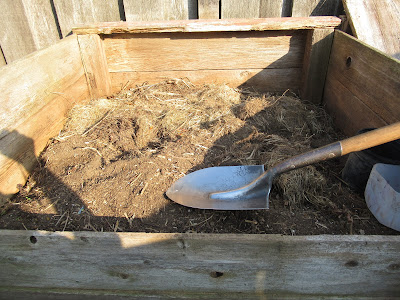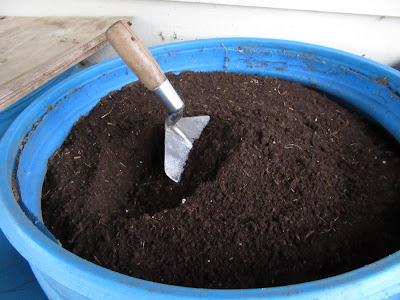More than three decades ago, a coworker, one who also was a vegetable gardener, told of growing his corn through a black plastic sheet. Using the plastic as a mulch and weed barrier, he had great success keeping the corn warm and weed free with his black plastic 'mulch'.
I gave it a try. I bought a roll of 6 mil black plastic, 10 feet wide by 100 feet long and cut it into pieces 5 feet by 12.5 feet. These comfortably covered a 4 foot by 12.5 foot, 50 square foot bed with room to spare. That roll gave me 16 bed cover pieces. The plastic turned out to be Silage Cover plastic that was used by the area farmers to cover the open silage ends of their dairy farm's bunker silos. The stuff was very ultraviolet resistant and has never broken down in the sunlight for these 30 odd years.
 |
| Last year's carrot beds just before planting. |
 |
| Last year's corn bed started in black plastic. |
Black Plastic Bed Covers can keep the rains from leaching nutrients, restrict the sun from growing weeds, and warm the soil earlier than usual. The bed cover can also be used to stunt or kill any winter cover crops like fall rye in a matter of weeks.
 |
| Notice on left bed -- dead fall rye after removing black plastic |
 |
| Two beds from old chicken run. |
 |
| Before covering I like to rake a slight hill along the center of the bed for better runoff into the paths. |
When Jean-Martin Fortier’s book, “The Market Gardener – A Successful Grower’s Handbook for Small-scale Organic Farming” came out in English in 2014, I was pleased to see that he too recommended the use of black plastic as a weed suppressor.
I was a bit too proud to hear that I’d been ‘doing it right’ for many years on my much smaller scale garden. My son TOG hadn’t yet gotten into using that tool on his acre-plus but quickly adopted it as he gradually had the funds to afford larger scale sheets. He found it to be an initial cost that was well worth it.
My Black Plastic Bed Covers are a tool that I’d have a hard time doing without. That’s why I invested in a second roll – just in case.
Happy Gardening.



























